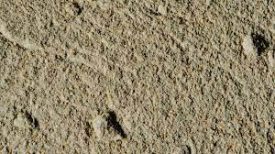Reactive Powder Concrete (RPC) is an advanced building material known for its exceptional strength, durability, and resistance to various environmental factors. It is a specialized form of concrete that utilizes a specific mix design and manufacturing process. Here is a step-by-step guide to help you understand the production of Reactive Powder Concrete:
Step 1: Material Selection
RPC requires high-quality materials with specific characteristics. The main components include cement, fine sand, silica fume, quartz powder, high-range water reducer, and steel or polymer fibers. These materials must meet stringent quality standards to ensure the desired performance of the final product.
Step 2: Mix Design
The mix design of RPC involves careful proportions of each component to achieve the desired properties. The specific mix design may vary depending on the intended application and required strength. The mix typically contains a high cement content, low water-cement ratio, and a high percentage of fine particles.
Step 3: Mixing
The mixing process for RPC is critical to achieving a homogeneous and well-dispersed mixture. The materials are usually mixed in a high-energy mixer, such as a planetary mixer or an intensive mixer. The mixing time is longer compared to conventional concrete to ensure proper distribution of the components.
Step 4: Casting
Once the mixing is complete, the RPC mixture cast into the desir molds or formwork. The molds should be carefully prepared and coated with a release agent to facilitate easy removal after curing. The RPC is compacted using vibration or other suitable methods to remove any air voids and ensure optimal density.
Step 5: Curing
RPC requires a controlled curing process to develop its unique properties fully. The curing conditions should maintain a moist environment and a stable temperature. The curing duration is typically longer than that of conventional concrete, often reaching 14 to 28 days, depending on the specific mix design.
Step 6: Demolding and Post-Curing
After the curing period, the RPC elements can demolded carefully. It is crucial to handle the freshly cured elements with care to avoid any damage. Post-curing may performed to further enhance the properties of RPC, typically by subjecting the elements to a high-temperature steam curing or a wet curing process.
Step 7: Finishing and Application
Once the RPC elements have undergone demolding and post-curing, they can finished as required. Finishing processes may include grinding, polishing, or surface treatments to achieve the desired aesthetics and surface quality. The finished RPC elements are then ready for installation or use in various applications.
It is important to note that the production of RPC requires specialized knowledge and expertise. Following industry best practices, quality control measures, and safety guidelines are essential for producing high-performance Reactive Powder Concrete. Consulting with experts and professionals in the field is recommend to ensure successful implementation of RPC in specific projects.
In conclusion, Reactive Powder Concrete (RPC) is an advanced construction material that offers exceptional strength, durability, and resistance to environmental factors. Producing RPC involves a specific mix design and manufacturing process that requires high-quality materials and careful attention to detail. The step-by-step guide outlined above provides an overview of the key stages involved in producing RPC, including material selection, mix design, mixing, casting, curing, demolding, post-curing, and finishing.

